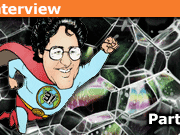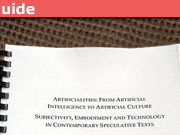How to Succeed at Oral Presentations As a Physics Major
Full Chapter List - So You Want To Be A Physicist... Series
Part I: Early Physics Education in High schools
Part II: Surviving the First Year of College
Part III: Mathematical Preparations
Part IV: The Life of a Physics Major
Part V: Applying for Graduate School
Part VI: What to Expect from Graduate School Before You Get There
Part VII: The US Graduate School System
Part VIII: Alternative Careers for a Physics Grad
Part VIIIa: Entering Physics Graduate School From Another Major
Part IX: First years of Graduate School from Being a TA to the Graduate Exams
Part X: Choosing a Research area and an advisor
Part XI: Initiating Research Work
Part XII: Research work and The Lab Book
Part XIII: Publishing in a Physics Journal
Part XIV: Oral Presentations
Part XIII: Publishing in a Physics Journal (Addendum)
Part XIV: Oral Presentations – Addendum
Part XV – Writing Your Doctoral Thesis/Desertation
Part XVI – Your Thesis Defense
Part XVII – Getting a Job!
Part XVIII – Postdoctoral Position
Part XIX – Your Curriculum Vitae
I mentioned earlier that there are two ways for physicists to communicate their work. The first is via publications in peer-reviewed journals. I have covered this in the last chapter of this series. The second, which we will cover here, is through oral presentations at various scientific conferences.
Each year, there are scientific conferences, workshops, etc. in various parts of the world, and for various scientific disciplines. In physics, there are many such conferences, often specific to a particular area of physics. However, two major physics conferences are held yearly and typically receive the largest yearly attendance by physicists from all over the world – The American Physical Society (APS) March Meeting, and the APS April Meeting. The March Meeting is typically the largest yearly physics conference, with an attendance of over 5000. The APS Centennial meeting in 1999 in Atlanta brought more than 11,000 attendees, including all the living Nobel Laureates in Physics and Chemistry. The subject matter covered in these two conferences differs, and you are recommended to go to the APS website for a listing of all the various divisions and when they meet (www.aps.org).
There are two major reasons why a physicist would attend a physics conference. The first is of course the need to present one’s work. While printed publications can also accomplish that, there is nothing that beats human interaction in conveying an idea. It works both ways – the presenter can present his/her idea more clearly, and the listener gets a more detailed or dynamic presentation, allowing for possible questions about things that aren’t that clear. And let’s face it, there is a huge amount of papers being published. Your work can often be overlooked. This is one way to make sure people pay attention and allows you to argue on its importance to the field of study. Sometimes, you do have to trumpet your own horn.
The second major reason is the interaction with others who are your peers or will be your peers. Presenting a talk at a physics conference is one way for you to get people in your field to recognize you. Chances are when you are done with your studies, these might be the very same people who might be the ones you seek employment from. It is never too early to make a name for yourself, and for people to start recognizing your name and your face (not to mention, your ability). Do not underestimate the importance of making contacts.
Furthermore, in terms of the workings of physics, you will be very surprised to learn that a lot of important insight and progress is often made at these conferences, especially when you’re sitting down with someone discussing something during a coffee break, or simply standing outside the conference hall. I’ve lost count of how many important ideas that I’ve gathered simply by discussing things with others. The majority of us do not, and cannot, work in isolation. These conferences offer us the latest news on who is doing what, the latest results that may have not yet even been published, and simply the ability to judge the “winds of change” on what might be the next important direction where the field is heading. In fast-moving fields such as superconductivity, by the time one reads a published paper in a journal, that particular issue may no longer be the “hot” topic. These conferences can truly give you a gauge on what the community is heading to, and what is considered to be the important topics. You may not want to go along with the trend, but at least you know what it is. The point here is that there’s a lot of physics that is done at one of these conferences, and often there is much new stuff that you haven’t heard about.
OK, now that I’ve hopefully convinced you of the importance of attending such a conference, how does one prepare for it? Often, your adviser will be the one suggesting that you attend one of these, at least a couple before you graduate, to present your work. So hopefully he or she will also have a plan to get you ready for it. This could be done by first discussing in exact detail what you should be presenting, what should be on your transparencies or viewgraphs, etc. A lot of advisers would ask that you do a practice run. He or she will either have you present it in front of him/her or call on other graduate students to attend your practice and try to ask you all kinds of questions. This will allow you to see if there’s any part of your presentation that is weak or unclear and also give you an idea of how long your presentation is. These conferences sometimes can have a tight time limit, and you need to make sure you are not running long and have to omit an important part of your work.
There are many resources you can read on making a good presentation. A polished, well-done presentation is a joy to sit through. A poorly thought of presentation is a bedtime story waiting to happen, and torture to sit through. While you may not care if people are bored or not, my philosophy has always been that if I have to do something, I might as well do it as best as I can. So the following is my suggestion on how you should organize your talk, based on my experience at giving and sitting through many of these throughout my career.
1. Organize your thoughts. Sit down, and figure out the sequence of items that you will be presenting. Make sure that it is clear enough that someone who doesn’t quite know your field might have a chance to understand. But here, you have to know the kind of audience you might be facing. If you are presenting this at a conference specific to your area of study, then you can skip a lot of background information that the audience already knows. On the other hand, if you are presenting this to a mixed audience, then expect to put a little more background info on the physics and maybe even the technique involved. From that point, look at the logical and sequential flow of the info that you will be presenting. Is there too abrupt of a jump from one view graph to the next? Can one see a connection from one to the other?
2. Keep in mind that out of sight is out of mind. You shouldn’t expect too much that the audience will remember previous viewgraphs that have gone past them. So your viewgraphs should try to contain as much relevant information as possible. However, the trap here is that you may make it too full and too convoluted that it is difficult to read. What you need to keep in mind is that (i) lots of equations don’t help unless you are a theorist and presenting a talk to only theorists (ii) pictures and graphs are good, IF they are properly annotated. Never, ever, present a graph or data without clearly indicating on the viewgraph itself what it is, what the quantity represents, and all the pertinent information. (iii) A very concise but brief description in words of important points you want to make on that view graph. Do NOT, I repeat, do not write lines and lines, or paragraphs of descriptions. If the audience is reading this, chances are, they are not listening to you. So why are you even there? Besides, it is annoying having to read a lot of things on a screen – one can get that by reading a paper. So limit only to the important points that you want to get across. This includes the description of the pictures or graphs that are shown and any relevant parameters. For example, if there are two different graphs and you are trying to compare the two, write in point form their similarities and differences. This accomplishes two things: you can look at the screen itself and be reminded of the things you are trying to convey and can emphasize them verbally, and the audience can read them and along with your oral presentation, be reinforced on the important point that you are trying to get across. This is also helpful if you are not a native English speaker and your English pronunciation is weak. Having the points written on the screen can still allow the audience to have an idea of what you are trying to say. But again, do not write lengthy prose and expect the audience to have the patience to read it.
3. Here’s a mistake that I see many presenters make – they are OBLIVIOUS to the audience. What this means is that either the presenter spent most of his/her presentation talking to the screen and not even looking at the audience, or the presenter did not pay attention to the audience’s reaction. While an oral presentation is you standing in front of people and giving a talk, it is a two-way street. You have to judge if what you are saying is getting through (after all, that’s the reason you are there). Look at the facial expressions of some of the audience members. Do you see a puzzled look? Do you see a bored look? Is the senior physicist nodding his head off to sleep and about to fall off his chair at any moment? It allows you to judge if you have time to go back and re-emphasize certain points that may be unclear. Of course, you do this after you are quite skillful at doing one of these presentations AND you have the luxury of time management. But it is still important to judge how your audience is reacting. A good presenter can tell if he or she needs to make the presentation clearer and not just stick to the “script”.
4. Learn from other presenters. By now you should have already attended several talks, department colloquiums, seminars, etc. Learn from them what to do and what NOT to do. Start paying attention to the slides and view the graphs that you are seeing. Is that clear, or not very clear? Is it too packed with info that the message is lost? Is the person going way too fast that you don’t have time to properly absorb what is being said?
5. Timing and pace are very crucial. Figure out how much time you have. This will limit the number of viewgraphs you can have. Most people will tell you that you estimate that you will spend 1 minute per viewgraphs. So this means that if you are given 20 minutes to talk, you should have 20 view graphs. I find that very unrealistic. I would do LESS number of viewgraphs. Chances are, you will have to do quite a bit of explaining, and you need to allow yourself some margin for error in case someone interrupts you during your talk to ask a question. It also can allow you to go back to earlier viewgraphs if you need to and explain some things. In my book, it is better to end early than to end too long. It allows for more time for questions and answers. Also, what many people do (and I do this often), is that you have extra viewgraphs in case you do have time left. These viewgraphs should be considered as a “bonus”, in that you don’t have to include them if you run long or on time, but in case you do have time, you can include them.
6. Don’t expect the audience to remember what you said, at least not everything. This is where trying to emphasize one, or two points is important. Try to sum up the “moral of the story” at the very end, to make sure they are aware that this is what you are trying to convey, and why it is important. You should try to make sure that you leave them with at least one thing that they remember. That’s all you should expect.
7. Practice, practice, practice. Your first few times at doing this may be nerve-racking, and may not even go well. Unfortunately, the only way to do this well is to do this many times. It is a skill that can only be acquired through practice. You will learn what works and what doesn’t.
By the time you are done with your graduate work, you should have presented at least once to an audience of professional physicists in your field of study. You should not be happy with your graduate training if you haven’t done so. If you intend to pursue a career in physics, chances are, your employer would want you to prove that you have the ability to talk in front of an audience as one of your communication skills (read the physics job advertisements if you need any more convincing). Conveying the importance of your work in front of an audience, be it people from a funding agency, other physicists, or just the general public, is a necessary skill as a physicist. You should have such skills by the time you are done with your Ph.D. training.
PhD Physics
Accelerator physics, photocathodes, field-enhancement. tunneling spectroscopy, superconductivity








another classic!